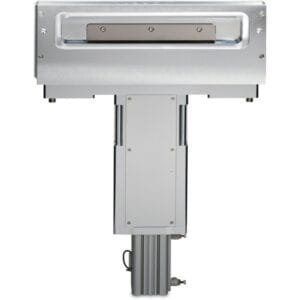KF (QF) HV Stainless Steel Weld Stubs (Inch Tube): Trusted Weldable KF Flange Connections for Inch-Based Vacuum Systems
KF (QF) HV Stainless Steel Weld Stubs (Inch Tube) are precision-engineered components designed for high-vacuum (HV) systems that rely on inch-dimension tubing. Each weld stub incorporates a standard KF (QF) flange on one end and an open stainless steel tube on the other, allowing engineers to directly weld the stub into custom vacuum assemblies, foreline manifolds, or HV chamber ports.
At the core of the design, the KF (QF) HV Stainless Steel Weld Stub (Inch Tube) offers seamless integration with standard KF hardware while maintaining compatibility with widely used inch-based vacuum infrastructure. Whether used in research laboratories, process chambers, or OEM systems, these weld stubs offer the ideal combination of modularity, material reliability, and high-vacuum readiness.
TFM fabricates KF (QF) HV Stainless Steel Weld Stubs (Inch Tube) from 304L or 316L stainless steel, providing excellent mechanical strength, corrosion resistance, and weldability. The 304L variant serves most general HV applications effectively, while the 316L option is preferred in more aggressive or chemically active environments where additional corrosion resistance is essential.
The KF (QF) flange used in these weld stubs follows the proven sexless design standardized across high-vacuum systems. Its sealing mechanism consists of an elastomeric o-ring housed in a centering ring, compressed between two chamfered flange faces using a circumferential clamp. This configuration offers reliable leak-tight performance from atmosphere down to 10⁻⁸ torr, with thermal operation limits dictated by the o-ring—typically between 0 °C and 120–180 °C.
Engineers working with inch tube systems benefit from the KF (QF) HV Stainless Steel Weld Stub (Inch Tube) by gaining the flexibility to connect non-flanged tubing to standardized vacuum ports or inline assemblies. The weld-ready tube end is ideal for TIG or orbital welding, making these stubs particularly valuable during chamber construction, vacuum line retrofitting, or the integration of custom-built foreline components.
Each KF (QF) HV Stainless Steel Weld Stub (Inch Tube) is finished to vacuum-grade standards, ensuring minimal outgassing and long-term reliability under HV and UHV conditions. TFM offers a full range of standard KF sizes—including KF16, KF25, KF40, and KF50—with corresponding inch-sized tube diameters. For non-standard lengths, flange types, or finish specifications, we provide custom fabrication options to meet specific vacuum design requirements.
In summary, KF (QF) HV Stainless Steel Weld Stubs (Inch Tube) deliver dependable, weldable KF flange connectivity for inch-based tubing systems. Their robust stainless steel construction, high vacuum compatibility, and easy integration make them a foundational component in the development of precision vacuum systems across science, industry, and OEM engineering.
Ordering Table
Accessories Table
| Description | For | Per Package | Part Number |
| Cast Clamps (SS) | KF10, KF16 Flanges | 1 | QF16-075-CS |
| Cast Clamps (SS) | KF25 Flanges | 1 | QF25-100-CS |
| Cast Clamps (SS) | KF40 Flanges | 1 | QF40-150-CS |
| Cast Clamps (SS) | KF50 Flanges | 1 | QF50-200-CS |
| Cast Clamps (Aluminum) | KF10, KF16 Flanges | 1 | QF16-075-C |
| Cast Clamps (Aluminum) | KF25 Flanges | 1 | QF25-100-C |
| Cast Clamps (Aluminum) | KF40 Flanges | 1 | QF40-150-C |
| Cast Clamps (Aluminum) | KF50 Flanges | 1 | QF50-200-C |
| Lever Clamps (Aluminum) | KF10, KF16 Flanges | 1 | QF16-075-CHA |
| Lever Clamps (Aluminum) | KF25 Flanges | 1 | QF25-100-CHA |
| Lever Clamps (Aluminum) | KF40 Flanges | 1 | QF40-150-CHA |
| Centering Ring (SS with Fluorocarbon O-Ring) | KF10 Flanges | 1 | QF10-050-SRV |
| Centering Ring (SS with Fluorocarbon O-Ring) | KF16 Flanges | 1 | QF16-075-SRV |
| Centering Ring (SS with Fluorocarbon O-Ring) | KF25 Flanges | 1 | QF25-100-SRV |
| Centering Ring (SS with Fluorocarbon O-Ring) | KF40 Flanges | 1 | QF40-150-SRV |
| Centering Ring (SS with Fluorocarbon O-Ring) | KF50 Flanges | 1 | QF50-200-SRV |





Reviews
There are no reviews yet.